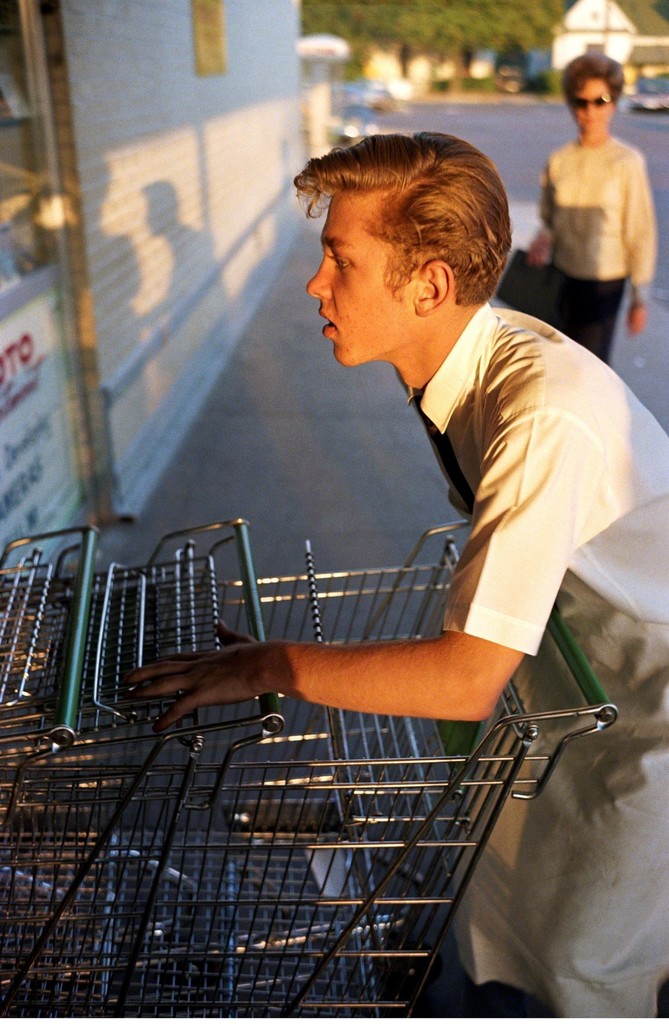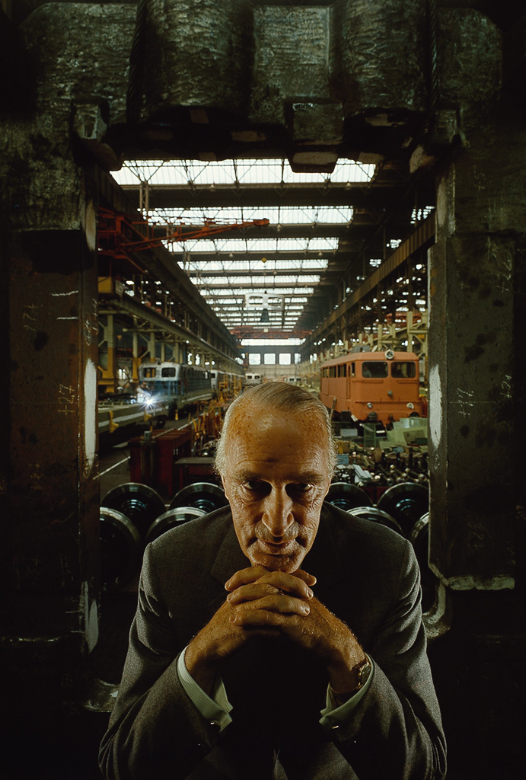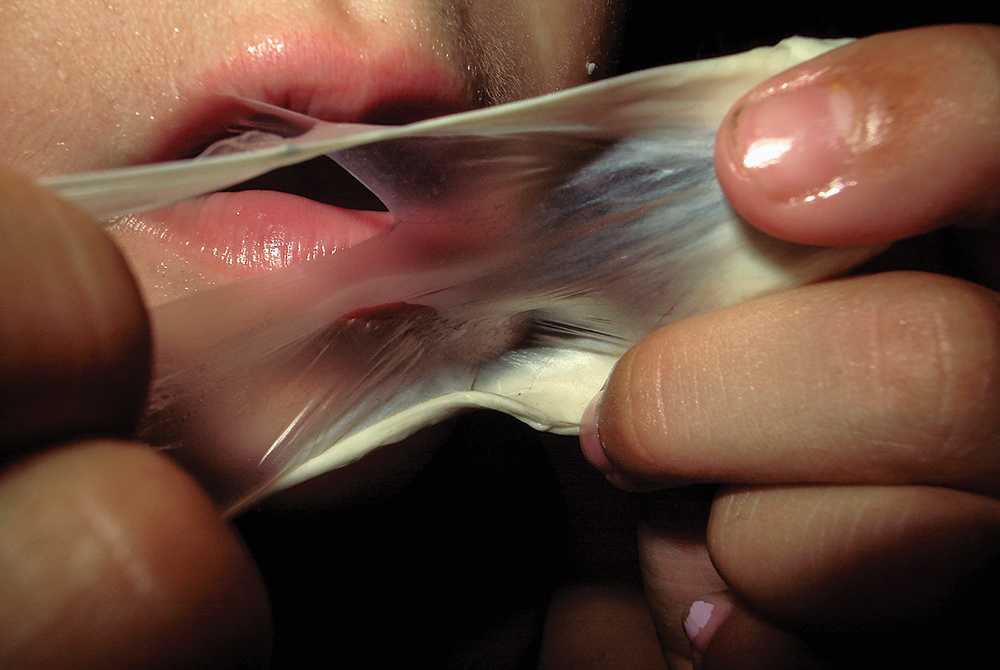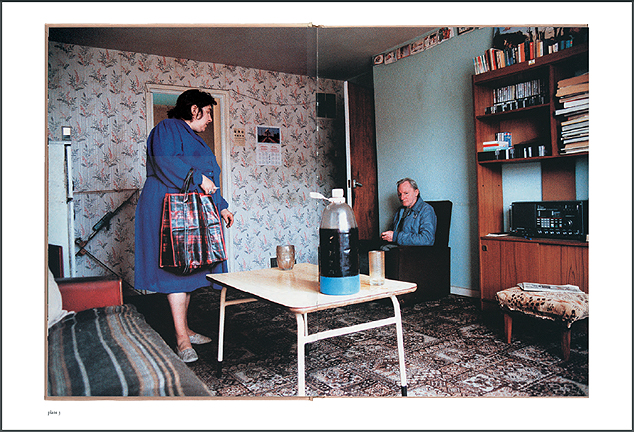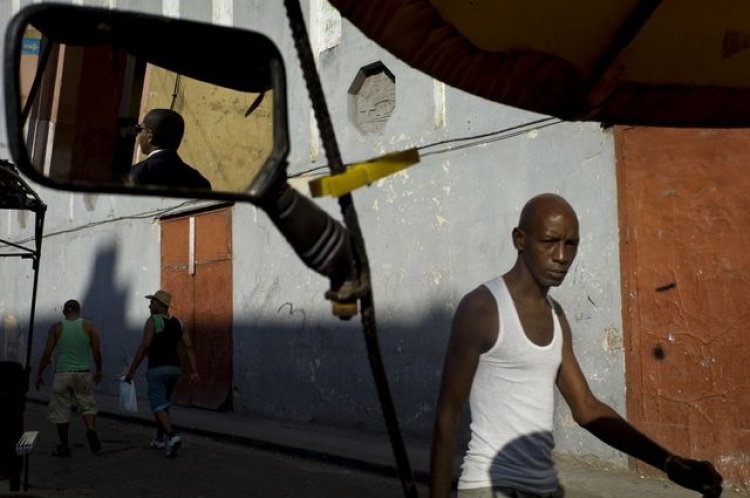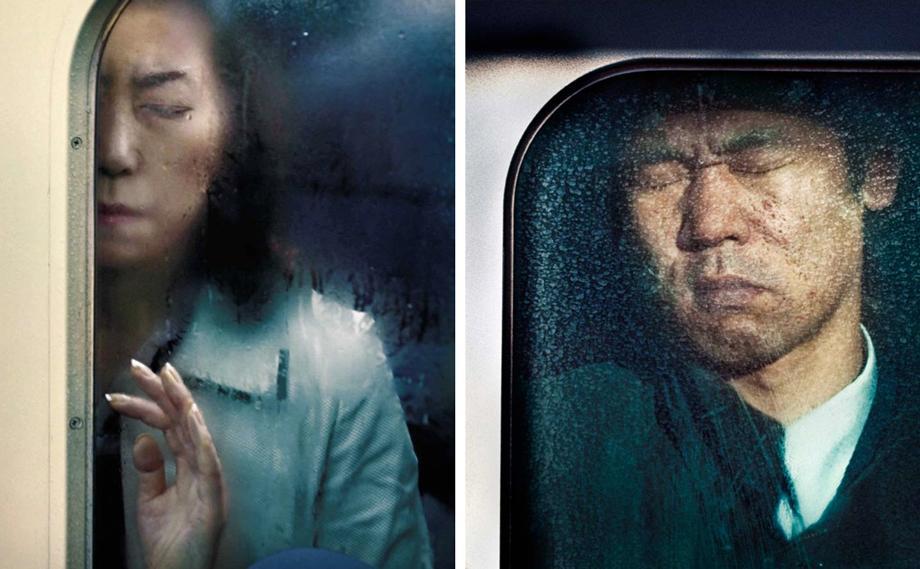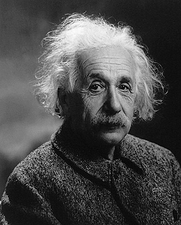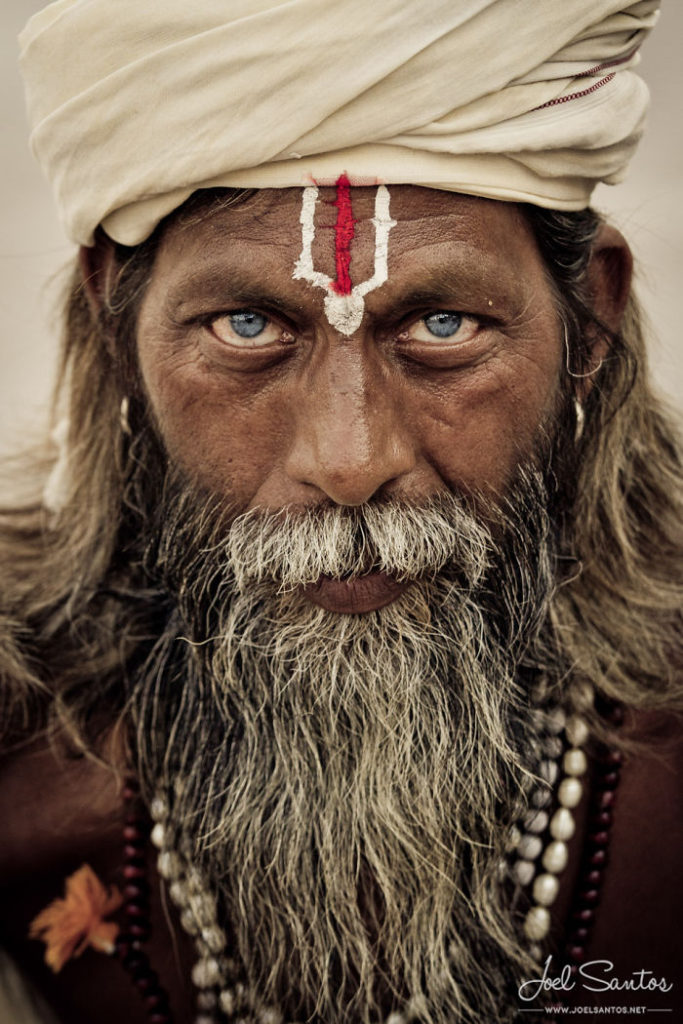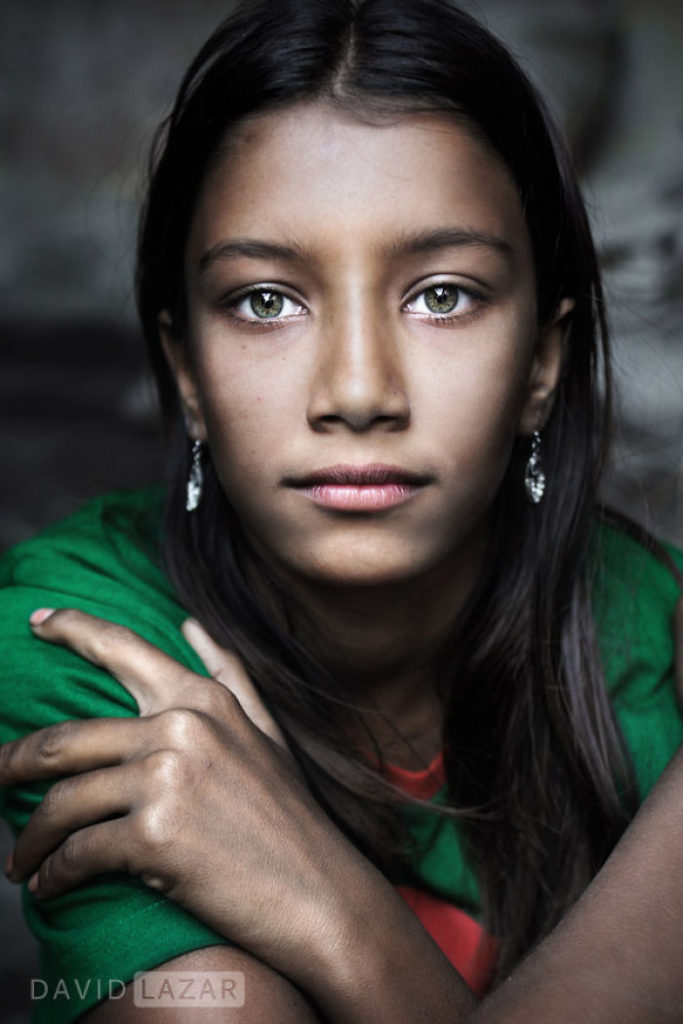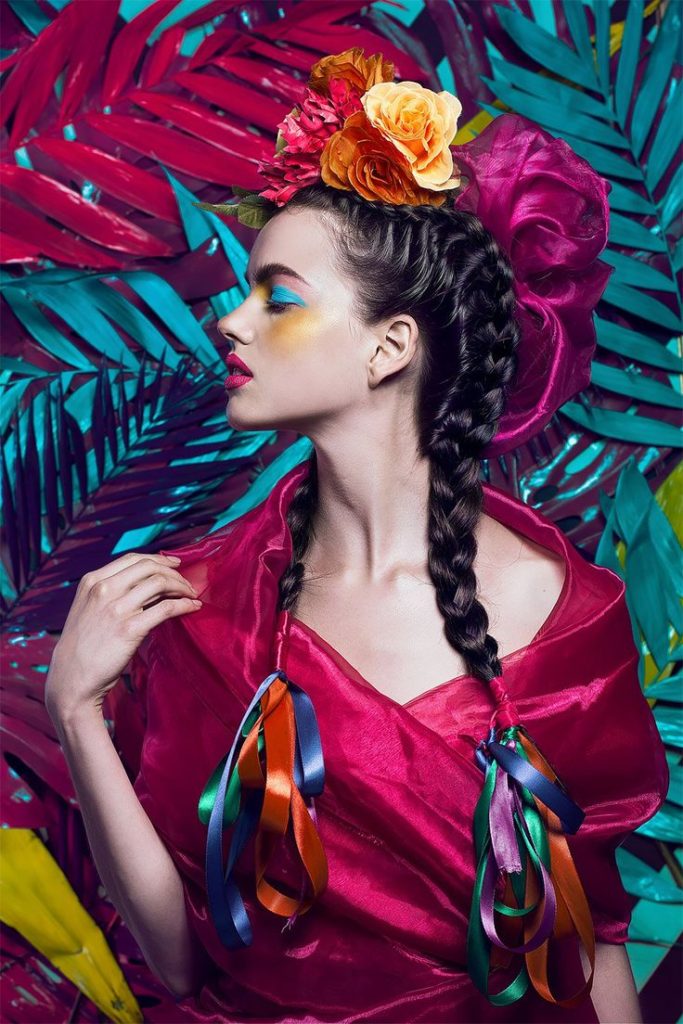
In this image, American photographer Arnold Newman has taken a portrait of German industrialist Alfred Krupp. Krupp’s family ran factories during World War 2 making ammunition and weapons for Nazi’s- he insisted on using Jewish prisoners from concentration camps to work at the factories.
In the foreground, Krupp is positioned in the centre of the image between two symmetrical pillars that stand behind him, Newman has deliberately made him the main focus. The camera is angled slightly above Krupp’s eye level and he is looking directly at the camera lens with a sinister expression, giving the impression Krupp is confident. The dark shadows around the perimeter of the image contrast with the natural daylight coming from above through skylights. This casts shadows on his face, particularly around his eyes which makes Krupp look more menacing and mysterious. I believe Newman did this purposefully to paint Krupp as a villain and to give the image negative connotations.
In the background, we can see lots of lineal patterns with repeated shapes along with industrial equipment and what seems to be trains, it is possible the photo was taken in one of Krupp’s factories. It is clear Newman has used a high aperture as the whole image is in focus, allowing us to clearly see the factory’s assets, alluding to the idea that Newman knew the truth about what Krupp and his family had done during the war and that he wasn’t going to hide it from the camera or the world. Furthermore, the repetition of lights above Krupp’s head could symbolize the many lives he ended by being a Nazi sympathizer and providing weapons/ammunition to them.
The image looks a little under exposed with a high contrast and dark tones throughout. There is also a subtle green hue surrounding the image which links to the idea that Krupp is malicious since green is often associated with evil and wickedness. The colours of the image have low saturation and are not the best quality, this suggests the photo was taken with an older camera. The lack of vibrancy creates a dull, lifeless atmosphere, again symbolizing the lives lost by the hands of Nazi soldiers/supporters. I believe Newman portrayed Krupp in this vicious way to expose him for his crimes and to get justice for Jewish people, after all Arnold Newman was Jewish himself so taking this shot let him finally have his revenge and find peace.















